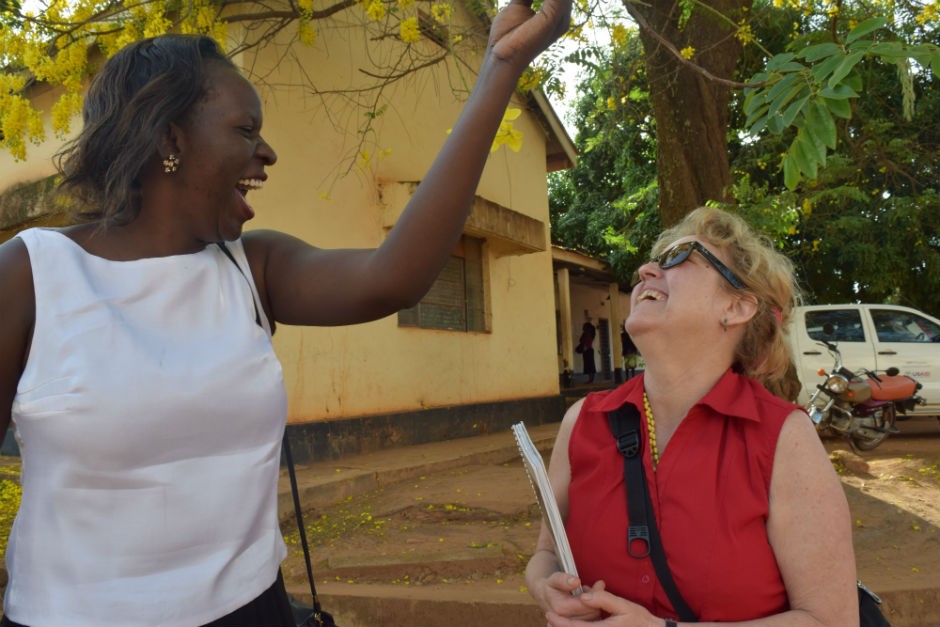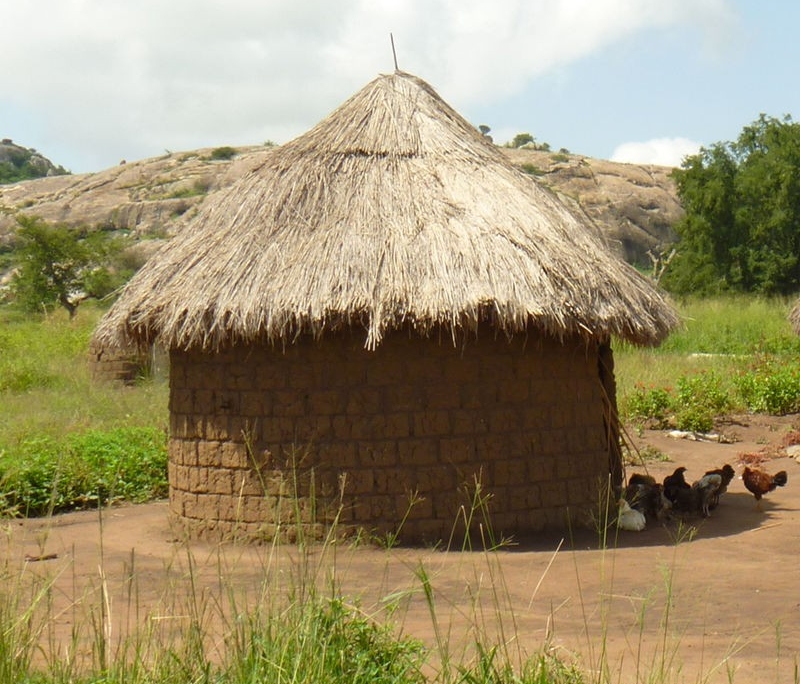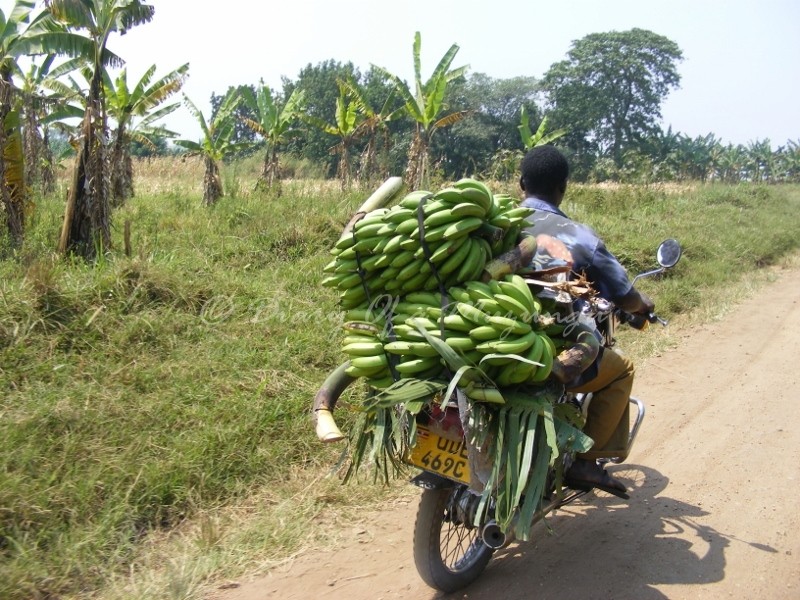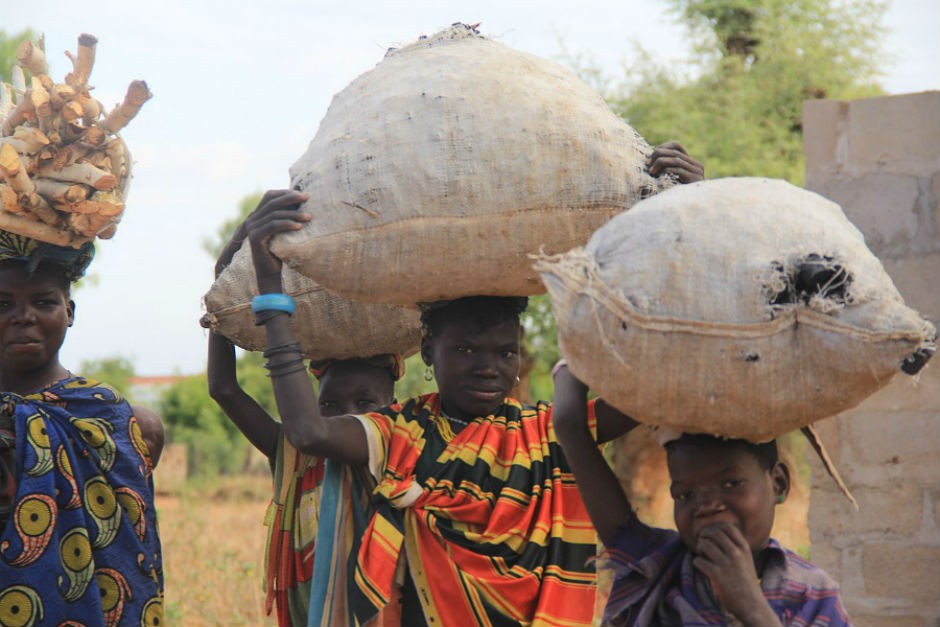Michelle Savard is a doctoral student in Education. Keenly interested in peace education and child protection, her research examines both the marginalization and the reintegration of formerly abducted young mothers in Northern Uganda. She has more than 20 years of experience designing, delivering and managing educational programs both nationally and internationally, which includes training for educators, police peacekeepers and social workers. She has co-edited a prestigious journal and coordinated the delivery of international conferences.
Blog post
A day in the life of an orange researcher
 Credit: Allie Theocharides
Credit: Allie Theocharides
Last blog, I promised that I would share a story I collected while conducting research with formerly abducted young mothers in Northern Uganda. However, there appears to be interest out there in hearing more about conducting research abroad, so I think I’ll weave that in and describe what a typical day looks like while living and working in Uganda.
A typical day
As I was waking up in my modern hut in Gulu (it’s considered modern as it has a toilet inside the hut), I heard the sound of something scrambling in the rafters (ch ch ch ch). I threw the sheet over my head. I feared there was a snake up there. There are over 200 species of snakes in Uganda and six cause a slow, painful death. The rock python grows to up to five meters and the black-necked spitting python can hawk venom up to 23 feet away. How rude is that? I was hoping that it was not one of those bad boys in the rafters. To be perfectly honest, those two snakes don’t reside anywhere near Gulu.
I listened carefully. The sound was too staccato for a snake. It must be rat. “Whew,” I thought. I got up, got dressed, took my anti-malarials and slathered sun screen all over, topping it off with a coat of insect repellent. I was ready for the day.
Ochi was waiting outside on his boda boda (motorcycle taxi) to drive me to the countryside where I would conduct my first interview. Ochi greets me with his dazzling smile and his crisp, white button-up shirt which his wife carefully irons and starches for him every morning.
The earth in Northern Uganda is a rich burnt orange colour. The back roads in this area are all packed dirt and it's a bumpy ride but a beautiful one — full of mango and banana trees, children yelling, "How are you?", and overloaded bodas (I once saw a guy transport four goats on a boda). There are women walking along the road, wearing bright African prints and all have baskets or containers on their heads filled with vegetables, water… you name it. I love this part of my day as I venture into some really remote places, and I love the wind and sun in my hair as we navigate through these rural villages.
 Credit: Wiki Commons
Credit: Wiki Commons
Finding our way
We arrive at this little village and my translator is waiting for us at a fork in the road. Susan, my friend and translator, who is a hoot, will often look around and comment, "Right now, we are nowhere." We go a little further and are then dropped off at the top of the road. We turn left, then right, go up a hill, cross the train tracks and somehow she finds the hut of the interviewee. I wonder how she remembers where each of these women live. “We were here last year,” she says. I don’t think I could find it again if I had been there every day last week. Adoch greets us and ushers us into her hut. It’s got to be over 35°C in here. Adoch has been cooking. I usually settle down onto the dirt floor and we talk for anywhere between 60 and 90 minutes.
This is the second time we meet Adoch and we’ve come to better understand her story of abduction and reintegration. Adoch begins…
A story of abduction and forced maternity
“I left Gulu and went to Laliya to seek refuge from the war. I stayed in a fenced house, though the people who lived there knew that there were rebels around, so they locked up. Later that night, we started hearing gunshots. I went back to sleep. On waking up, I saw the rebels touching me on the face, saying, ‘get up and start moving!’ They abducted fifty of us. Only two of us were told to carry luggage and continue. The rest were released.
"We moved until we reached Sudan. There was no way we could escape. We were always guarded. The war was intense. There was always crossfire. There were bombs. It was a nightmare, especially when I had my first child. We were given out to commanders. I was taken to Charles Ocaya. At the time, he had five wives. I was the sixth wife. My two children belong to him.”
 Credit: Wiki Commons
Credit: Wiki Commons
Stomaching the boo
Half-way through her story Adoch gets up and prepares some boo and posho. Boo is really slimy. To me, it tastes like tree sap. I really do not like this vegetable. Posho is made from maize and is a staple here. Adoch offers me a plate of this food with such sincerity. You have to understand, this woman barely has the means to feed herself and her children and she is offering me her food. With each bite though, I feel like my stomach is heaving. I tell myself that this is vegetable. It’s fine, it’s just the texture. Meanwhile, Susan is chit chatting with Adoch in Acholi which allows me the space to have this mental boxing match.
Humour and war
Susan and Adoch begin laughing their heads off. Susan explains that they are talking about the war and a story about this elderly man who was abducted by rebels. She stops as she’s laughing too hard to continue. So far nothing is funny to me.
She explains that this man was asked to carry heavy bags through the bush. They walked for several hours and this poor man was sweating under the crushing load. At one point he stopped, threw the bags to the ground, and refused to continue. Now both Adoch and Susan are roaring. He told the rebels that they weren’t very “nice” and that they shouldn’t ask old men to carry heavy bags. “Where’s the respect?” He demanded. At this point, the rebels started laughing at the audacity of this elderly man and let him go.
How does an observer interpret this story? a) Ugandans are simply peculiar? b) They are in denial over the atrocities of the war? c) Humour renders their haunting memories more digestible? Each explanation suffers from cultural relativism and from “the thrill of learning singular things” (Bloch in Geertz, 1973, p. 8). The partial answer to this question is c). Susan later explained to me that humour is a strong part of traditional storytelling and it is used to get through those hard times and specifically to make sense of the war. The complete answer is found in situating Ugandans within a broader set of traditions, culture, history and politics.
I finish my plate of boo and posho and Adoch smiles. I feel so ashamed of myself for being finicky in a country where almost anyone would deeply appreciate an offering of boo. Adoch continues…
 Credit: Wiki Commons
Credit: Wiki Commons
The escape
“The most stressful time I had in the bush was when my children were still small. We were attacked all of a sudden. There was no way we could protect ourselves; we had to run away. I had one child on my back and another was [trying to walk]. This child was too young to walk; but because I had to carry some luggage on my head, there was no way I could carry her.
"We ran and reached a point where I needed to cross the road. I had the baby and there were government soldiers also following us. I left one of my children behind. I didn’t even realize how I left her behind. When I crossed the road, I realized I did not have my second child. I started crying and running back to find her. I found her all by herself. She was alone, crying on the road.
"I cried so much that day that I threw away the entire luggage that I had and took care of my children. I went back to where the rest of the people were. Without the luggage, I had no bed sheets to cover with. That very night, I slept in the cold with my children.
"We stayed at the top of Mt. Goula for a few weeks before we could set out to go to Sudan. At the border of Sudan, we had very serious crossfire. We ran away from there.”
Reintegration
“When I returned home, life wasn’t easy. My parents were all dead. My dad died before I left for the bush, before I was abducted. My mum was sick and also died. So I went to live with my uncle. He had two wives. They mistreated me and my children so I rented a hut and began living on my own with my children.
"In the community where I live, no one knows that I was abducted. They sometimes insult me because I have children and no man, but I don’t pay attention. I’m getting training now. I will be a baker and one day I will make enough to send my children to school.”
When it's time to get up, my legs are both asleep but I try to gracefully roll out of the hut. Today’s story was particularly intense. Usually Susan and I walk a while in silence after each interview as we need to process what we just heard. Sometimes we just stop, sit under a mango tree and cry together. After a while, Susan is able to move on and then somehow she gets me laughing.
These young mothers have been through so much (abduction, rape, forced maternity, abandonment, marginalization and poverty) yet they are still determined to create a better life for their children. It is that determination that I’m counting on while a local research team and I try to shape a program with them, that will give them the knowledge and skills they have identified that they need to improve their own welfare.
Ochi comes back
We hop on another boda boda and do three more interviews that day. At the end of the day, I call Ochi to pick me up. By this point I'm an orange human dust ball as the road has clung onto my sunscreen and clothes. Ochi arrives, smiling and looking as crisp as he did first thing this morning. There’s not even a speck of dust on his shiny black shoes! I’m wilted and need a cold drink. I hop on the back of the bike and Ochi tells me about his day while I enjoy the cool breeze in my hair.
About the author


